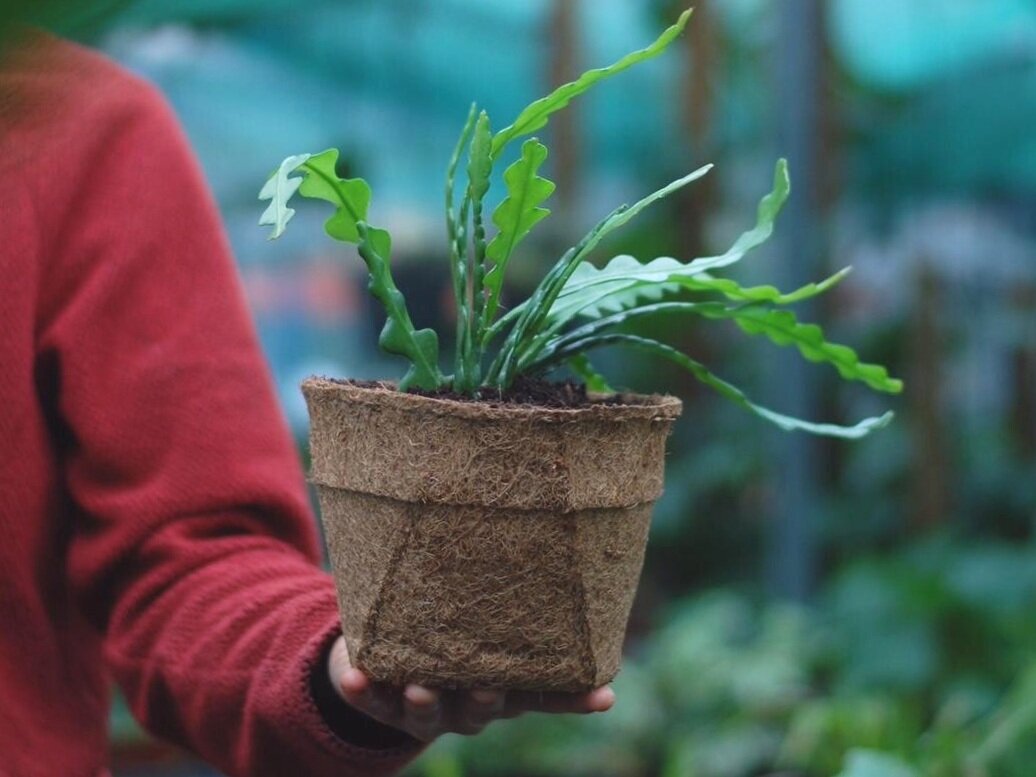For an industry grounded in the natural world, the house plant retail world has many challenges in becoming more sustainable. We want to learn more and more about the things we can do to act more sustainably in our plant-loving lives.
So we turn to Horticulturalist and house plant specialist Harriet Thompson AKA Harriet’s Plants who is a one-woman-band shining a light on this complex topic and leading the way by growing and selling plants sustainably.
How did you start working with plants? Have plants always been a passion of yours?
The short answer is not at all. It wasn’t until I moved overseas that I really knew what I wanted to do with my life, career wise. I remember buying a small selection of houseplants from a small Market grower in Tasmania and it was there that my obsession started. I worked in a café there and they supplied the majority of their own veg from their fields and that ethos has stuck with me ever since. When I moved back to England I decided to study Horticulture at degree level at the Eden Project, down in Cornwall and I haven’t stopped talking about plants since.
You are based in Lichfield in the Midlands, what does your growing setup look like and how has it evolved since you’ve been there?
I am based out the back of a thriving garden centre so when I first took over the glasshouse it was used as a storage unit for any excess stock that they had. It had weeds everywhere, both inside and outside and the glass itself needed some tender loving care. Without the help of my friends and family it would have been a long, long job to get it into shape. After a big old clean and tidy I started moving some plants across that I had been growing in my Mom’s shed over the winter, I ordered seeds and compost and went from there. It went from an empty greenhouse to a very full greenhouse practically overnight…and then we went into lockdown.
Your business has a really admirable ethos of sustainability and environmentalism. What was the catalyst for your environmentally focused growing practices?
The ethos from the business runs throughout everything I do both at work and at home. I find it hard to sum up this answer in a few words but I think the planet needs some help.
I have previously bought in house plants grown by other growers and it has always bothered me that most plants come in single use plastic packaging, peat compost and have air or road miles behind them. As someone who prides herself on having a low carbon footprint I had to make sure my business was aligning with my views.
I think ecosystems that should be thriving are being exploited in order to create a product (peat based composts) that potentially don’t need to be used as much as they are. If growers can grow in alternative, harmless and more sustainable mediums, then this should be made a priority.
I think if I can grow on a larger scale next year and keep up with demand then it would be really great to see UK businesses within horticulture, supporting UK peat free growers and therefore lowering their impact.
Can you give us some examples of the methods you employ to be as sustainable as possible?
From day one Harriet’s Plants has reused waste materials, such as pots, from local garden centres. Since growing we’ve always been peat free and have recently changed over to coir pots rather than plastic as coir is a sustainable and biodegradable product. The coir pots are also responsibly sourced and ensure that ethical labour practices are followed during the making process and that each person receives the right value for their skilled labour.
I have never and will never use harmful pesticides within my growing space, something that I feel extremely passionate about, as those chemicals not only harm the environment but also harm the people using them frequently. Even the packaging used to protect my products during shipping are 100% home compostable.
What do you find are the biggest challenges to growing your plants in an environmentally friendly way?
I haven’t yet found any problems with growing sustainably. I employ the method of prevention is better than cure. I spray the whole greenhouse regularly with a Neem oil mix, which so far seems to keep pests away. I also encourage natural predators into the green house as a biological control method of pest control. I highly recommend a natural pest control as part of any garden routine, wether it be indoor or outdoor.
What are your top tips for amateur gardeners wanting to grow and garden sustainably, indoors and out.
Number one, AVOID CHEMICALS. Hand weeding has always been the best method of controlling weeds, but if you really don’t have time for it then salt mixtures can be made to get things under control.
Number two, REUSE OLD POTS AND CONTAINERS. Give them a good old clean with hot soapy water, make sure there is drainage and away you grow. If you don’t have any old pots, ask family, friends or even neighbours. Go to garden centres and ask if they have any (they nearly always do and will be glad to get rid of some).
Number three, GO PEAT FREE. Peat is made cheaper for the consumer, but at what cost? It’s at the cost of the loss of biodiversity surrounding peat bogs and the decline in species present (rare birds, dragonflies and a huge number of plants). Peat bogs are a phenomenal carbon store, but when extracted all that carbon previously stored is released into the atmosphere and pollutes our planet. There are many peer reviewed papers on this matter that I’m positive would sway many minds into paying a little bit more for their compost in order to reduce the impact their garden has on the planet.
Thinking of the common practices within the horticultural industry, what do you see as the biggest threat to the environment?
Corporate giants. Big companies that can afford to buy in on such a large scale that therefore reduces the cost for the consumer but has detrimental impacts on the growers and also the environment. The bigger companies want cheap whatever the cost on the environment and therefore the growers have to grow as cheaply as possible in order to be part of that big supply chain. That’s why peat is nearly always used.
A lot of big companies are minimally affected if they lose stock and also aren’t worried as much about their carbon footprint or their landfill waste. This then has a knock on effect to the customers who are buying as there is no specialism. No one knows where that product has come from or how it was grown and that’s where I step in. I want to share my knowledge with my customers and I want to teach people about the impact that buying from larger chains does to the economy.
Do you see any major shifts towards sustainability in the supply chain of garden plants and houseplants?
Harriet’s Plants has made the shift and I’ve spoken to many small businesses that feel the same but have never been able to get their hands on anything other than peat based plants that are wrapped in plastic. I have also spoken to many individuals that have never thought about where their plant comes from or the effect of what its grown in has on the planet but all would prefer to buy locally and sustainably if the option was there.
Are house plants trickier to grow in peat free compost? Do you need to treat them any differently to ensure they thrive, compared to those grown in peat based composts?
Absolutely not. Just as easy and just as fun.
When working with coir pots, as a natural product, water has the chance to escape via the sides of the pot so potentially more attention when watering is needed, however this only makes for a more enjoyable watering process and helps the plant parent to understand the plants needs and requirements.
Can you share some of your future plans for Harriet’s Plants?
I have many areas I would like to expand within the business. Next year I have plans to expand my growing space and therefore expand my plant varieties available. This big change will hopefully then enable me to take on a new member of the team, if not more than one, to cope with the amount of stock I will then be growing. I would love for absolutely everything within my Nursery to be grown within those walls, wether it be from seed or from propagating mother stock and I would love to run more events around the nursery to teach people further about what I do and why I do it.
I now have the stock to offer wholesale to small businesses around the UK and would love to expand on this further in the near future.
There are a few other plans that for now I’ll keep close to my chest but definitely keep an eye out for further news on my website.
How can customers purchase your plants?
This is one of the easier questions to answer! Head to my website for my current availability www.harrietsplants.co.uk - this has all my indoor plants, all my botanical wares and also any local gardening services I provide. It tells you a little bit about how and why I started and I put all my updates for the business on the site. I also have an active instagram account @harriets.plants and have recently set up an Etsy account HarrietsPlants where you can buy my harder to find plants.







